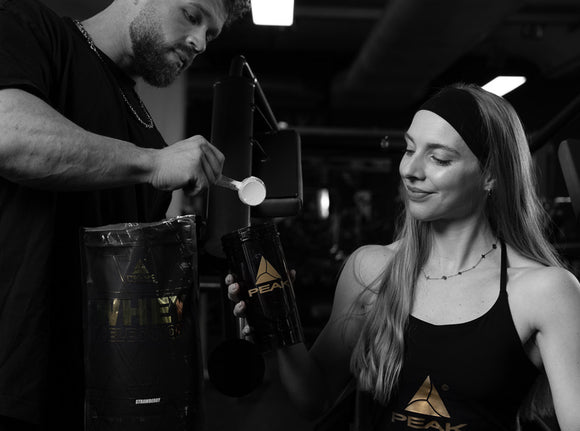The new muscle boost: What's behind the biohacking hype
Fitness used to be simple: go to the gym, sweat, and have a protein shake. Today, that's no longer enough. Anyone who wants to achieve maximum results with minimal effort in 2025 doesn't just have to train—they have to hack their body. This is where biohacking comes in. What began in the tech scene with Silicon Valley greats has long since reached the gym.
Biohacking means nothing less than the systematic optimization of one's own body – using technology, science, and a dash of self-experimentation. And the goal is clear: to get stronger faster, recover better, and last longer – without harming the body.
Wearables, sensors and apps: training by the numbers

Fitness bands, chest straps, smartwatches, and even smart clothing provide today's biohackers with precise, live data about their bodies. This data is analyzed by apps and converted into concrete recommendations for action using AI algorithms:
- Would you rather regenerate than stress today?
- Heart rate too high – is it better to reduce cardio?
- Sleep deficit detected – adjust training intensity?
Result: No more blind pumping – every unit fits.
Neurostimulation & EMS: Training without weights?
Biohacking in the gym also means training without training. It sounds absurd, but it's reality – through EMS (electrical muscle stimulation) or neurostimulation technology. Electrical impulses are delivered directly to the muscles via electrodes. What happens?
- Muscles contract like in real training
- Deep muscles are activated
- Joints are protected
- 20 minutes EMS ≈ 90 minutes strength training
Studios like BodyClub, Bodystreet, and Fitbox have long embraced this technology. Combined with traditional training, it creates a hybrid approach that significantly accelerates results.
Blood values & genetic analysis: The individual training plan
One-size-fits-all is a thing of the past. Modern biohackers rely on DNA tests and blood analysis to understand exactly what their body needs—and what it doesn't. Providers like Bioniq, Lykon, and 23andMe offer insights into:
- Nutrient deficiencies
- Genetic predisposition for muscle building
- Regeneration speed
- Inflammatory markers
The result: training plans and nutrition strategies that are not off the shelf, but come from your own blood.
Sleep tracking & regeneration: The underestimated superpower
Sleep is the secret MVP of muscle building—and the greatest biohack of all. Without deep sleep, there are no gains. Period. That's why many biohackers rely on:
- Oura Ring, Whoop or Fitbit for sleep tracking
- Blue light filters, sleep masks, supplements
- Breathing exercises & cold therapy for better recovery
The goal: to recover the body as much as possible so that it can be subjected to top-level stress during the next training session.
Mindset & Neurohacking: How the brain makes muscles grow
It sounds like science fiction, but it's real: Mental training, meditation, and neurofeedback not only influence focus, but also muscle building. Why?
- Less stress = less cortisol = better muscle building
- Better focus = better execution = more effect
- Visualization activates the same brain areas as real training
Nutrition & Supplements: Biochemistry instead of BroScience
Biohacking nutrition is not a coincidence, but a strategy. It is based on data, blood tests, and the targeted use of active ingredients. Supplements play a central role – provided they are high-quality, correctly dosed, and individually tailored.
- Adaptogens such as Ashwagandha for stress regulation
- Creatine to increase strength and mental performance
- Omega-3 fatty acids for cell health and anti-inflammatory
- Magnesium for regeneration and sleep quality
- Multivitamin complexes
Those who focus on quality here can specifically promote regeneration, concentration and performance – without unnecessary strain on the body.
The future of training: AI coaches and real-time biofeedback
The gym of the future? Probably emptier, but smarter. Virtual personal trainers analyze your performance via camera. AI avatars provide real-time feedback. Training equipment automatically adjusts resistance based on your daily fitness, sleep, and heart rate.
Conclusion: Biohacking is not a hype – but the new standard
What once sounded like science fiction is now reality: Those who train with biohacking build muscle more specifically, recover faster, and avoid injuries. Whether you're a recreational athlete or a professional, those who know their body can control it more efficiently.
The muscles of the future will not only grow through dumbbells – but through data, technology and intelligence.
TEAM PEAK
Sources
Study on electrical muscle stimulation (EMS) and muscle hypertrophy – National Institutes of Health:
Wearables in sports: opportunities and risks – NCBI







